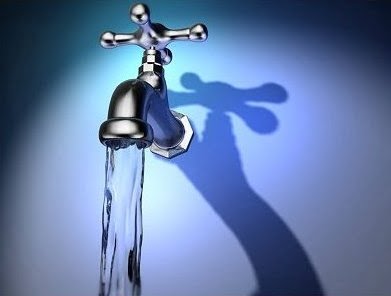 Plumbing System not being used? What you should do BEFORE coming back.
Plumbing System not being used? What you should do BEFORE coming back.
Operational plumbing systems are essential to the health and safety of our homes, businesses, and the overall community. Water systems are closed – and therefore safe, even when not in use – right?
Not exactly! Thousands of buildings and businesses have been idle, or undergoing much lower usage rates during the current global health crisis. Apart from the economic aspects that come with closed businesses there are often overlooked issues when a building is not being used. That’s where building owners and managers need to place some focus now – to be prepared to properly and safely reopen a building. This is especially the case for businesses that reply on water – such as beauty shops, health clubs, and restaurants to name a few.
A Crisis in waiting
Once allowed to open there is the possibility of dangerous health implications due to stagnant water. According to a recent article posted by Circle of Blue, “Prolonged closures can degrade water quality within buildings and introduce into the water harmful pathogens like Legionella bacteria and chemical contaminants such as lead. Certifying a building as fit for reopening means clearing the plumbing system,”*
There can be the potential for a waterborne crisis if buildings closed for the long term are suddenly opened without undergoing a plumbing certification. “To have entire city districts filled with buildings that are largely empty for weeks and months is an unprecedented event for plumbing systems”, says Andrew Whelton, a Purdue University environmental engineer. Whelton says that “ultimately you want to know if the plumbing is safe,” Whelton continues, “and the only way to know is to test.” The question becomes – test for what? And – who can and should do the testing?
Whelton additionally notes, “One very big concern according to Circle of Blu is Legionnaires’ disease. Legionnaires’ disease cases display seasonal shifts and geographic patterns: they spike in the late summer and early fall and are most prevalent in the Great Lakes states and the mid-Atlantic region. Those are two areas that have been hit hard by Covid-19.”
Where to start
A starting point is water quality evaluation. Engaging a reputable plumbing contractor and tasking them to analyze the water in your building is the place to start. As relayed by Circle of Blue, “chlorine presence is an obvious starting point.” Chlorine is utilized to disinfect drinking water; however, it degrades in a matter of days. Its absence can result in the growth of bacteria in pipes, nozzles, and faucet fixtures.
More steps for building owners – put a plan in place
Then what’s needed is an action plan for re-opening the building with safe water and safe plumbing. In addition to the quality of the water, such things as the physical construction of the pipes, where the facility is in relationship to the water main, how long has the water been sitting and more factors need to be reviewed. The task at hand is to purge the system of old water -and recertify it for use. Your plumbing contractor is the perfect partner to help build your particular building’s strategy.
Dennis Fiddick, Operations Manager for DRF Water Heating Solutions, states that this is a critical part of the process. “There are specific temperatures and length of time requirements to properly kill bacteria.” Fiddick also notes. “This is why it’s is imperative to hire a partner who has experience in this area.” Lastly, he advises that this step “can’t be overlooked or forgotten. You may see city inspectors require a permit for occupancy related to buildings that have been shut down”.
Purdue’s Whelton, a co-author of the recently released study: ‘” Considerations for Large Building Water Quality after Extended Stagnation”** (accessible here:) breaks down actions into short and long term needs.
From the study – building owners and managers should:
The best course of action for owners and managers of shuttered buildings is to arm themselves with knowledge. Being prepared to re-activate a building is a critical step in the process. Then, of course, developing a plan to safely return to normal operations after having the plumbing system re-certified is needed. Providing safe and reliable water to serve the needs of the building and the people who either live, work, or engage in some sort of activity there is the critical factor that must be top of mind. Awareness and action will help building owners and managers reach this goal.
Need some advice or help – call DRF at 630-615-7000. We can provide guidance on returning your building to service.
* Brett Walton – Circle of Blue – https://www.circleofblue.org/2020/world/water-contamination-risks-lurk-in-plumbing-of-idled-buildings/
** April 7, 2020, Proctor, Rhoads, Keane, Salehi, Hamilton, Pieper, Cwiertny, Prevost and Whelton